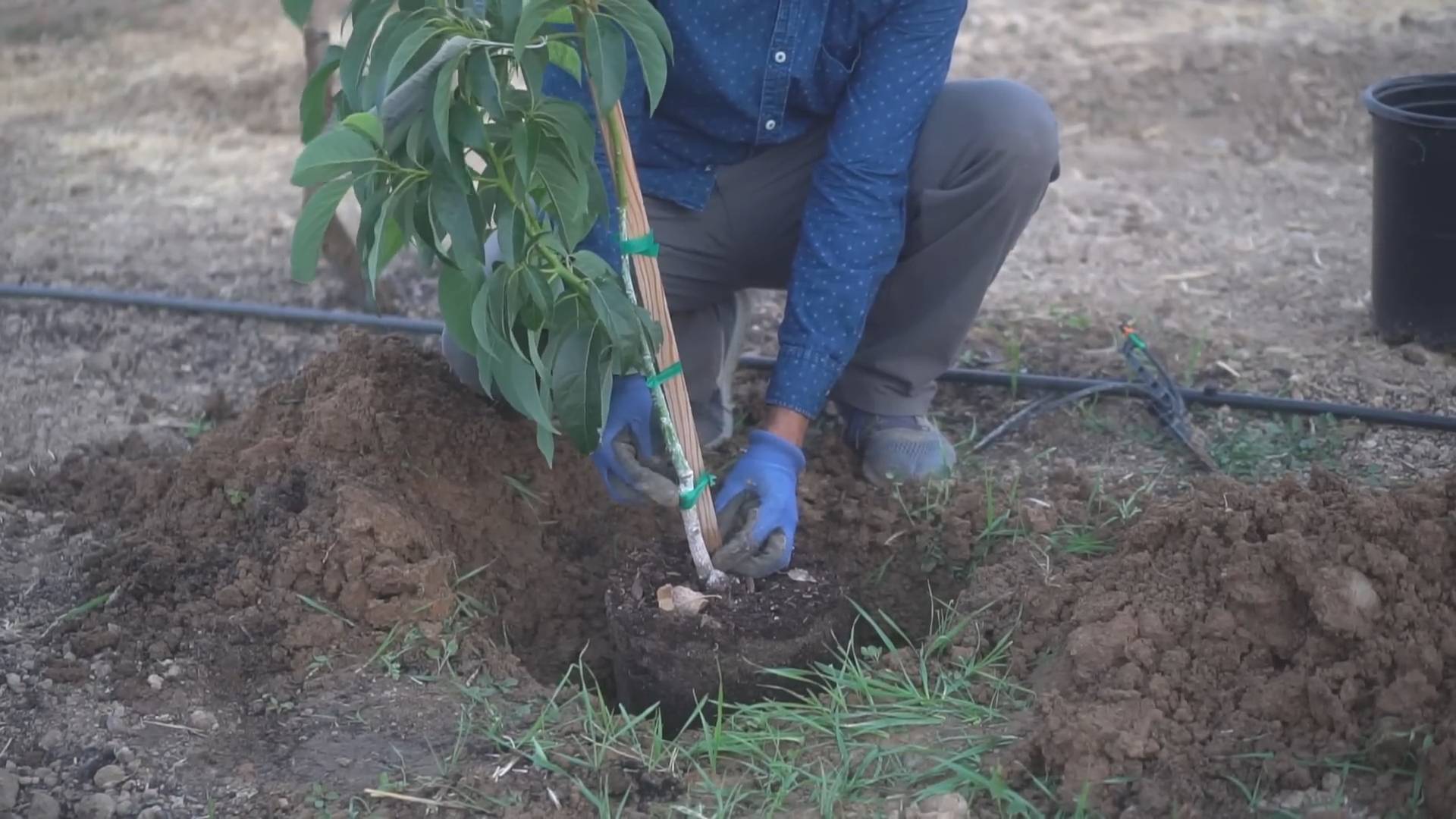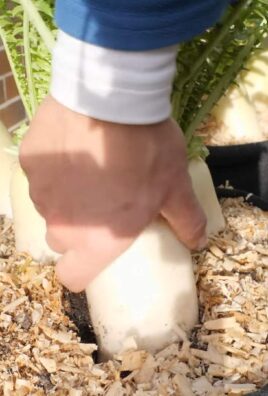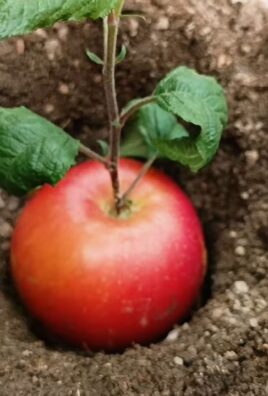Grow Avocados at Home – imagine plucking a perfectly ripe avocado straight from your own tree, ready to transform into creamy guacamole or a delicious addition to your morning toast! Sounds like a dream, right? Well, it doesn’t have to be! For centuries, avocados have been cherished, originating in Mesoamerica as far back as 5000 BC, and now, you can bring that rich history and flavor right to your backyard (or even your windowsill!).
But let’s be honest, the thought of growing your own avocado tree can seem a little daunting. Maybe you’ve tried before and ended up with nothing but a sad, sprouting pit that never quite took off. Or perhaps you’re just not sure where to even begin. That’s where this DIY guide comes in! I’m going to share some simple, yet effective, tricks and hacks that will dramatically increase your chances of successfully growing your own avocado tree.
Why do you need these tricks? Because store-bought avocados can be expensive, and the satisfaction of nurturing your own plant from seed to fruit is incredibly rewarding. Plus, you’ll have a constant supply of fresh, delicious avocados right at your fingertips. So, let’s ditch the guesswork and dive into the secrets of how to successfully grow avocados at home. Get ready to unleash your inner gardener and enjoy the fruits (literally!) of your labor!

Grow Your Own Avocados: Your DIY Guide for Growing at Home
Hey avocado lovers! Have you ever wondered what it would be like to grow your own avocados? I’ve tried it, and it’s surprisingly easy and incredibly satisfying. In this article, I’ll show you how to grow a small avocado plant from a simple avocado pit. Let’s get started!
What You Need:
- A ripe avocado pit (preferably from an avocado you ate yourself)
- Three to four toothpicks
- A glass or a cup
- Water
- A small pot
- Potting soil
- Patience (the most important thing!)
Preparing the Avocado Pit
- Clean the pit: After you’ve enjoyed your avocado, rinse the pit thoroughly under running water. Remove any remaining fruit flesh, as it can lead to mold.
- Find the right side: The avocado pit has a pointed end and a slightly flatter end. The pointed end is the top, where the sprout will grow from, and the flat end is the bottom, where the roots will emerge.
- Insert the toothpicks: Stick three to four toothpicks into the middle of the pit, evenly spaced. These will be used to suspend the pit in the glass, so the bottom end is in the water. Be careful not to push the toothpicks in too deep, to avoid damaging the pit.
The Water Method: Getting the Pit to Sprout
- Prepare the glass: Fill the glass or cup with water. Make sure the water is clean.
- Place the pit: Rest the pit with the toothpicks on the rim of the glass, so that the bottom end of the pit (about one-third to one-half) is in the water. The toothpicks should hold the pit stable.
- Be patient and observe: Place the glass in a warm, bright spot, but not in direct sunlight. Direct sunlight can heat the water too quickly and damage the pit.
- Change the water regularly: Change the water every one to two days to keep it clean and fresh. This prevents mold and keeps the pit healthy.
- Wait for the roots: Now it’s time to wait! It can take several weeks to months for the pit to crack open and form roots. Be patient and don’t give up. First, the pit will likely split, then a small root will grow from the bottom, and finally, a shoot will emerge from the top.
- What to do if nothing happens? Sometimes, nothing happens. If the pit hasn’t cracked after a few months or if it gets moldy, it’s likely not viable. Try again with another pit.
Planting: From the Glass to the Soil
- The right time: Once the roots are about 5-8 cm (2-3 inches) long and the shoot has a few leaves, it’s time to plant the pit in a pot.
- Prepare the pot: Choose a small pot with drainage holes so excess water can escape. Fill the pot with high-quality potting soil.
- Plant the pit: Dig a small hole in the soil large enough to accommodate the pit. Place the pit so that the top half is sticking out of the soil. The roots should be well-covered with soil.
- Water it in: Gently water the soil until it is moist but not drenched.
- The right location: Place the pot in a bright, warm spot, but avoid direct sunlight, especially in the first few weeks.
Care: How to Keep Your Avocado Plant Happy
- Watering: Water the plant regularly, but avoid waterlogging. The soil should always be slightly moist. Check the moisture by sticking your finger about 2-3 cm (1 inch) deep into the soil. If it feels dry, it’s time to water.
- Fertilizing: Fertilize the plant about every two to four weeks with a mild liquid fertilizer for houseplants. Follow the instructions on the fertilizer package.
- Pruning: If the plant gets too tall or has too few leaves, you can prune it. Simply trim the shoot back a bit to encourage the growth of new leaves.
- Repotting: When the plant outgrows its pot, you will need to repot it into a larger one. This is usually necessary every one to two years.
- Pests and Diseases: Watch out for pests like aphids or spider mites. If you find pests, treat the plant with a suitable insecticide or a natural solution like neem oil.
- Overwintering: Avocado plants are not frost-hardy. If you live in a region with cold winters, you must bring the plant indoors for the winter. Place it in a bright, cool spot and water it less.
Important Tips and Tricks
- Patience is the key: It can take years for your avocado plant to bear fruit, and sometimes it doesn’t happen at all when grown from a pit. Think of it as a beautiful houseplant project.
- The right variety: Not all avocado varieties are equally suited for growing. Hass avocados are often a good choice as they germinate relatively easily.
- Humidity: Avocado plants love high humidity. You can increase the humidity by regularly spraying the plant with water or placing it near a humidifier.
- Yellow leaves: Yellow leaves can be a sign of overwatering, underwatering, or a nutrient deficiency. Check the soil moisture and fertilize the plant if necessary.
- Brown leaf tips: Brown leaf tips can be a sign of dry air or too much fertilizer. Increase the humidity and reduce the amount of fertilizer.
- Rotate the plant regularly: Rotate the plant regularly so it gets even light and doesn’t grow crooked.
Common Problems and Solutions
- The pit is molding: If the pit is molding, the water is likely not clean enough. Change the water regularly and clean the glass thoroughly.
- The roots are rotting: If the roots are rotting, the soil is likely too wet. Water less and make sure the pot has good drainage holes.
- The leaves are falling off: If the leaves are falling off, it could be due to various causes, such as too little light, too much water, or pests. Check the conditions and adjust accordingly.
Additional Information
- Grafting: If you want to ensure your avocado plant bears fruit, you can graft it. This involves attaching a shoot from a fruit-bearing avocado plant onto your homegrown plant. However, this is a more advanced procedure.
- Multiple plants: To increase the likelihood of fertilization, you can grow several avocado plants at the same time.
I hope this guide helps you grow your own avocados at home. It’s a rewarding project that not only gives you a beautiful houseplant but also allows you to experience nature up close. Good luck and have fun gardening

Conclusion
So, there you have it! Growing avocados at home, while requiring patience and care, is an incredibly rewarding experience. It’s more than just a fun project; it’s about connecting with nature, understanding the life cycle of a plant, and ultimately, enjoying the fruits (literally!) of your labor. This DIY trick isn’t just a method; it’s an invitation to cultivate your own little piece of paradise, right in your own home.
Why is this a must-try? Because store-bought avocados, while convenient, often lack the vibrant flavor and freshness of homegrown produce. Plus, think of the satisfaction of nurturing a tiny seed into a thriving tree, knowing you played a direct role in its growth. It’s a sustainable and eco-friendly way to enjoy one of the world’s most beloved fruits.
But the journey doesn’t end with the basic method. Feel free to experiment! Try different avocado varieties to see which one thrives best in your environment. Grafting is an advanced technique that can significantly speed up the fruiting process and ensure you get the specific type of avocado you desire. You can also explore different soil mixtures and fertilization schedules to optimize growth. Consider using organic fertilizers for a truly natural and healthy avocado.
Don’t be afraid to get creative with your presentation, too. Use decorative pots to add a touch of elegance to your indoor avocado garden. Train your avocado tree into interesting shapes through pruning. The possibilities are endless!
Ultimately, the success of growing avocados at home hinges on your dedication and willingness to learn. It’s a process of trial and error, but the rewards are well worth the effort. We encourage you to embark on this exciting adventure and discover the joy of nurturing your own avocado tree.
We are confident that with a little patience and the right approach, you can successfully grow avocados at home. So, grab an avocado pit, gather your supplies, and get started today!
And most importantly, we want to hear about your experience! Share your successes, your challenges, and your tips in the comments below. Let’s create a community of avocado enthusiasts, learning and growing together. Your insights could be invaluable to others who are just starting out. Let us know what worked for you, what didn’t, and any variations you tried. Together, we can unlock the secrets to successfully growing avocados at home and enjoy the delicious rewards for years to come.
Now, let’s address some of the most frequently asked questions about growing avocados at home.
Frequently Asked Questions (FAQ)
How long does it take for an avocado tree grown from a pit to produce fruit?
This is probably the most common question, and the answer is… it varies! Generally, avocado trees grown from seed can take anywhere from 5 to 13 years to produce fruit. Grafted trees, on the other hand, can start producing fruit much sooner, often within 2-4 years. The reason for the long wait with seed-grown trees is that they are not genetically identical to the parent tree, and there’s no guarantee they will produce fruit at all, or that the fruit will be of the same quality. Grafting ensures you’re getting a tree with the desired fruiting characteristics.
What are the best conditions for growing avocados indoors?
Avocados need plenty of sunlight, ideally at least 6-8 hours per day. A south-facing window is usually the best option. They also need well-draining soil to prevent root rot. A mixture of potting soil, perlite, and sand works well. Keep the soil consistently moist, but not soggy. Avoid overwatering, as this is a common cause of problems. The ideal temperature range for avocados is between 60°F and 85°F (15°C and 29°C). Protect them from drafts and extreme temperature fluctuations.
My avocado tree’s leaves are turning brown. What’s wrong?
Brown leaves can indicate several problems. Overwatering is a common culprit, as it can lead to root rot. Underwatering can also cause brown leaves, especially if the soil dries out completely. Another possibility is salt buildup in the soil from tap water or fertilizers. Try flushing the soil with distilled water to remove excess salts. Pests, such as spider mites, can also cause leaf damage. Inspect your tree carefully for any signs of infestation and treat accordingly. Finally, low humidity can also cause leaf browning, especially in dry climates. Consider using a humidifier or placing the pot on a tray filled with pebbles and water to increase humidity around the plant.
What kind of fertilizer should I use for my avocado tree?
Avocados benefit from regular fertilization, especially during the growing season (spring and summer). Use a balanced fertilizer specifically formulated for avocado trees, or a citrus fertilizer. Look for a fertilizer with a ratio of N-P-K (nitrogen, phosphorus, potassium) that is relatively balanced, such as 10-10-10 or 15-15-15. Follow the instructions on the fertilizer packaging carefully, and avoid over-fertilizing, as this can damage the roots. Organic options like compost tea or fish emulsion are also excellent choices.
How do I prune my avocado tree?
Pruning is important for maintaining the shape and health of your avocado tree. Prune in late winter or early spring, before new growth begins. Remove any dead, damaged, or diseased branches. You can also prune to control the size and shape of the tree. Pinching back the tips of new growth encourages branching and a bushier growth habit. Avoid pruning too heavily, as this can reduce fruit production.
Can I grow multiple avocado trees in the same pot?
It’s generally not recommended to grow multiple avocado trees in the same pot, as they will compete for resources such as water, nutrients, and sunlight. This can stunt their growth and reduce fruit production. If you want to grow multiple trees, it’s best to plant them in separate pots.
How do I know when my avocado is ripe?
Determining ripeness can be tricky. Unlike some fruits, avocados don’t always change color significantly when ripe. The best way to tell if an avocado is ripe is to gently squeeze it. It should yield to gentle pressure but not feel mushy. You can also check the stem end. If the stem comes off easily and the flesh underneath is green, the avocado is likely ripe. If the stem is difficult to remove or the flesh underneath is brown, the avocado is not ripe or is overripe.
My avocado tree is not producing fruit. What can I do?
There are several reasons why your avocado tree might not be producing fruit. As mentioned earlier, seed-grown trees can take a long time to fruit, or may not fruit at all. Lack of pollination is another common reason. Avocados require cross-pollination to produce fruit, so you may need to plant another avocado tree of a different variety nearby. You can also try hand-pollinating the flowers. Insufficient sunlight, improper fertilization, and stress from pests or diseases can also inhibit fruit production. Ensure your tree is getting adequate sunlight, nutrients, and protection from pests and diseases.
What are the different types of avocados I can grow at home?
There are many different avocado varieties, each with its own unique characteristics. Some popular varieties for home growing include Hass, Fuerte, Reed, and Zutano. Hass is the most widely grown variety and is known for its creamy texture and rich flavor. Fuerte is another popular choice, with a slightly thinner skin and a milder flavor. Reed avocados are larger and rounder than Hass avocados, with a nutty flavor. Zutano avocados are known for their cold hardiness and are a good choice for colder climates. Research which varieties are best suited to your climate and growing conditions before making your selection.
How do I deal with pests and diseases on my avocado tree?
Regularly inspect your avocado tree for signs of pests or diseases. Common pests include spider mites, aphids, and scale insects. You can control these pests with insecticidal soap, neem oil, or horticultural oil. Diseases such as root rot and anthracnose can also affect avocado trees. Prevent root rot by ensuring good drainage and avoiding overwatering. Treat anthracnose with a fungicide. Remove any infected leaves or branches to prevent the spread of disease.
We hope these FAQs have answered some of your questions about growing avocados at home. Remember, patience and persistence are key to success. Happy growing!





Leave a Comment